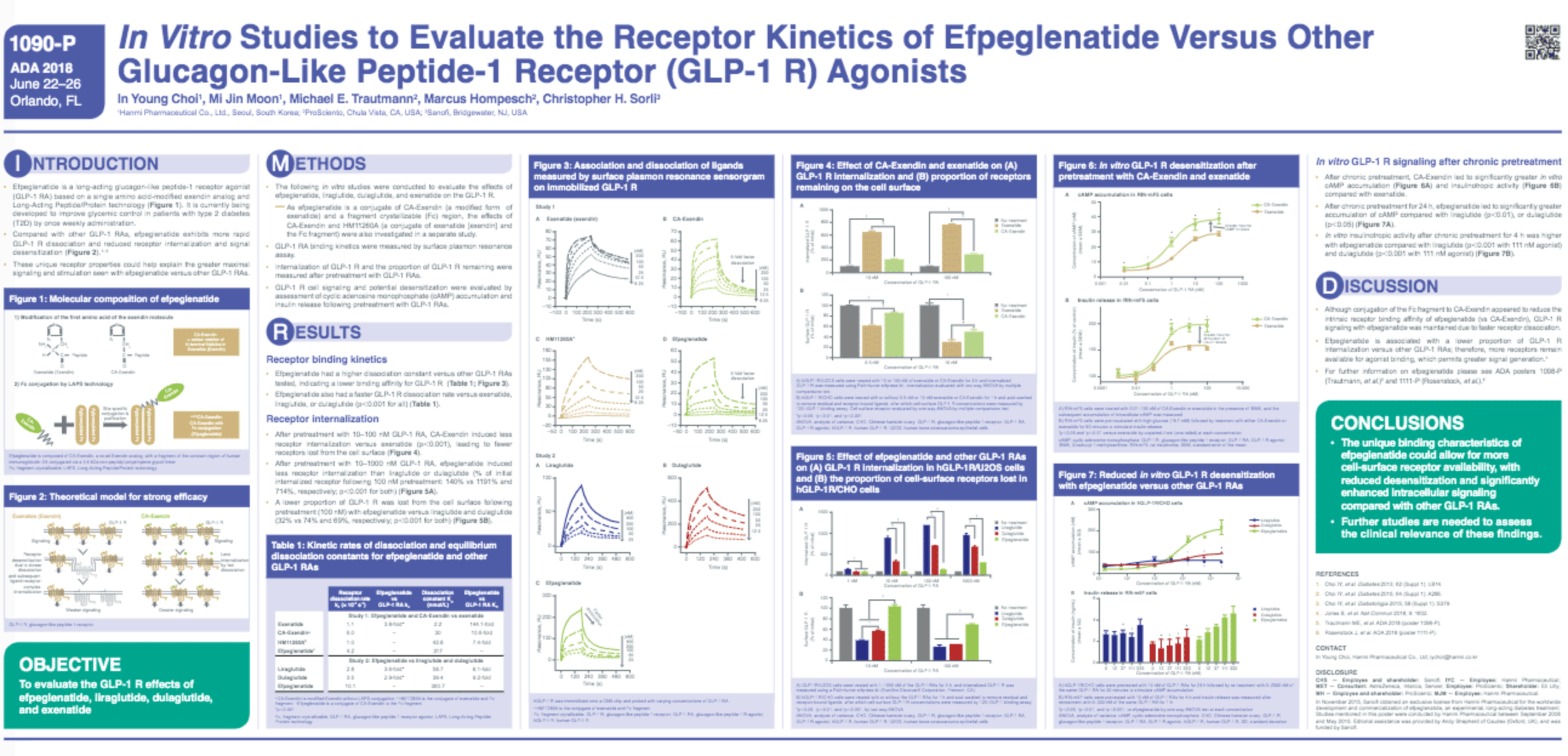About
About this Poster:
Efpeglenatide (efpeg) is a long-acting GLP-1 R agonist in development for the treatment of T2D. Efpeg’s effects on the GLP-1 R suggest that it is a superagonist: a ligand that leads to greater maximal signaling and stimulation compared with its endogenous ligand. In vitro studies evaluated the superagonistic effects of efpeg and compared them to the effects of liraglutide (lira) and dulaglutide (dula) on GLP-1 R-binding kinetics and internalization, and cell signaling/desensitization. Efpeg had a higher dissociation constant vs. lira or dula (360.7 vs. 58.7 and 39.4 nmol/L, respectively) indicating a lower binding affinity for GLP-1 R (~6.1 fold vs. lira, ~9.2 vs. dula) and faster dissociation vs. lira (~3.6 fold; p<0.001) or dula (~2.9 fold; p<0.001). At 100nM, efpeg led to less receptor internalization vs. lira or dula (% of initial internalized receptor: 140% vs. 1191% and 714%, respectively; p<0.001 each) and lower proportions of receptor lost from the cell surface (32% vs. 74% and 69%; p<0.001). After pretreatment (4 or 24 h), efpeg led to significantly greater accumulation of cAMP and insulinotropic activity vs. lira or dula (Figure). The superagonistic effect of efpeg on GLP-1 R may be due to its specific binding characteristics, allowing more cell-surface receptor availability for intracellular signaling. The clinical relevance of these findings should be assessed further.


